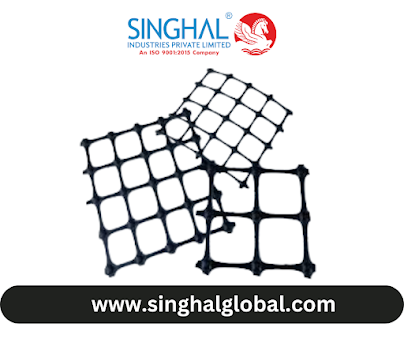The Ultimate Guide to Geotextile Prices: How Much Should You Expect to Pay?
If you're planning a construction project that involves soil stabilization, erosion control, or drainage management, you may be considering using geotextile. But how much does geotextile cost, and what factors can affect the price? This guide will provide you with a breakdown of geotextile prices and the variables that can impact them.
What is geotextile and why is it used?
Geotextile is a permeable fabric made from synthetic
materials like polyester or polypropylene. It is commonly used in construction
projects to improve soil stability, prevent erosion, and manage drainage.
Geotextile can be placed between layers of soil to prevent mixing, or it can be
used as a filter to allow water to pass through while retaining soil particles.
Its versatility and durability make it a popular choice for a wide range of
construction applications.
Factors that affect geotextile prices.
Geotextile prices can vary depending on several factors. The
type of geotextile, its weight, and its size are all important considerations.
Heavier geotextiles are generally more expensive than lighter ones, and larger
sizes will also cost more. Other factors that can affect the price include the
manufacturer, the location of the supplier, and the quantity ordered. It’s
important to do your research and compare prices from different suppliers to
ensure you’re getting the best deal.
Average prices for different types of geotextile.
Geotextile prices can vary greatly depending on the type of
geotextile you need. Non-woven geotextiles are generally the most affordable
option, with prices ranging from $0.15 to $0.50 per square foot. Woven
geotextiles are typically more expensive, with prices ranging from $0.25 to
$1.00 per square foot. Geogrids, which are used for soil stabilization, can
cost anywhere from $0.50 to $3.00 per square foot. It’s important to keep in
mind that these prices are just averages and can vary depending on the factors
mentioned above.
How to save money on geotextile purchases.
Geotextile prices can add up quickly, especially if you need
a large amount for a project. However, there are ways to save money on your
geotextile purchases. One option is to buy in bulk, as many suppliers offer
discounts for larger orders. Another option is to shop around and compare
prices from different suppliers. You may also want to consider using a
lower-priced option, such as non-woven geotextiles if it will still meet your
project needs. Finally, be sure to factor in the cost of installation when
comparing prices, as some geotextiles may require more labor to install than
others.
Where to buy geotextile and how to compare prices.
When it comes to buying geotextiles, there are several
options available. You can purchase it from a local supplier, online retailer,
or directly from the manufacturer. It’s important to do your research and
compare prices from different sources to ensure you’re getting the best deal.
Look for suppliers that offer bulk discounts or free shipping to save even
more. Additionally, be sure to factor in the cost of installation when
comparing prices, as some suppliers may offer lower prices but require more
labor to install the geotextile.
Final takeaway
Singhal Industries Pvt. Ltd. is a renowned manufacturer and exporter of geotextiles, which are materials used in civil engineering and construction projects to improve soil stability, drainage, and filtration. Their product range includes various types of geotextiles such as geotextile fabric, geotextile membrane, geotextile sheets, woven geotextiles, and non-woven geotextiles. If you are about to buy custom geotextile products make a call at +919090919019/

.png)
Comments
Post a Comment